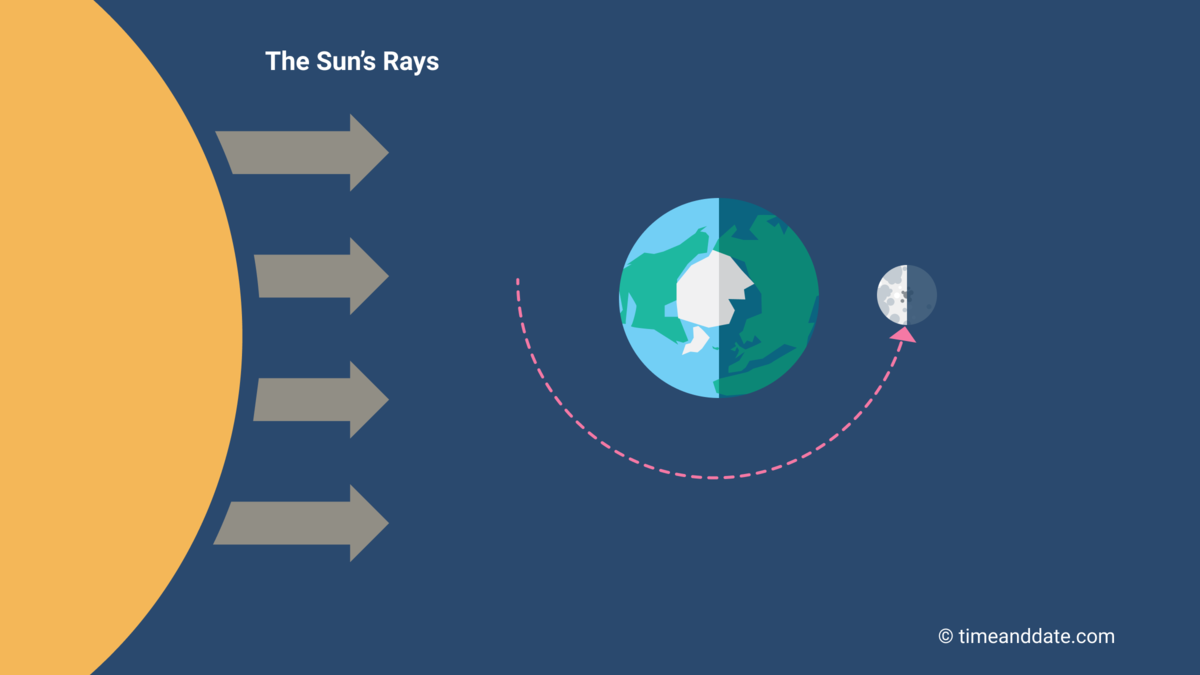What is larger a gibbous or crescent moon?
Gibbous
What is a tide
The daily rise and fall of the water on earth
What is an Eclipse
The event in which one object in space cast a shadow on another object in space
How long does it take the sun to orbit its central star
Bonus: What causes this to happen
365.25 day
Bonus: The force of gravity
List the Inner planets in order
Bonus: What is the nickname given to them and why
Mercury, Venus, Earth, Mars,
Bonus: Terrestrial Planets because they have hard rocky surfaces.
The moon makes its own moonlight which is why we can see it at night
False - Moon light comes from the sun
How often does the tide change on earth
How many high tides and low tides do we have each day
6 Hours (6 hours and 12.5 mins to be exact)
Bonus: Two of each
True or False: The Moon revolves around the Earth.
True.
How long does it take the Earth to rotate once?
What does it cause?
24 hours
Day and night
List the Outer Planets in order
Bonus: What is their nickname?
Jupiter, Saturn, Uranus, Neptune
Bonus: Gas/Ice Giants
List the Moon Phases in order
New Moon
Waxing Cresent
1st Quarter
Waxing Gibbous
Full Moon
Waning Gibbous
3rd Quarter
Waxing Cresent
What is the cause of tides on the planet
Bonus 100: What has the biggest effect on tides
The sun and moon's gravitational pull-on earth
Bonus: Moon
List the Earth, Moon, and Sun in size order and age order:
Bonus 100: Rank them by age
Size (smallest to largest): Moon, Earth, Sun
Bonus: Age (youngest to oldest): Moon, Earth, Sun
What seasons are the equinox's, which seasons are the Solstices.
Bonus- How is sun distributed during Equinox
How is it distributed during a solstice.
Equinox= Spring and Fall
Solstices= Summer Winter
Bonus: Equinox equal days, Solstices unequal days
List at least two differences between comets and asteroids
Asteroid- Found in the Asteroid Belt, made of dust rock and metal, short period orbits around the sun
Comets- Found in the Oort Cloud/Kuiper Belt, Made of Ice Dust, Long Period Orbits of the Sun, produce a tail when they pass the sun
Which Moon Phases creates Spring Tides Along with Solar and Lunar Eclipse
Full Moon- Lunar and New Moon- Solar
What is a Neap tide and Which Moon phases cause them
When the Tidal Range is at its lowest
1st & 3rd Quarter Moons
What is the order of the Earth Sun and Moon during a solar eclipse and Lunar eclipse and what is blocked in each eclipse
Solar- Sun Moon Earth- (Sun Blocked)
Lunar- Sun Earth Moon (Moon Blocked)
What season is it for us when Northern hemisphere is titled away from the sun? Explain Why
Bonus What season would it be in the southern hemisphere
Winter
Because they receive less direct sunlight causing temperatures to be cooler.
Bonus: Summer
When humans first started to study the solar system, they made it into a _________ model with the earth in the middle after more research came along, they found out that the _____ should be in the middle at it was remade into _________ model instead
Geocentric
Sun
Heliocentric
How Long does it take for the moon to go through all of its phases and start over
Bonus: How many Full Moons and New Moons do we have each year
28-30 Days
Bonus: 13
How you expect the tidal range to be at the beach if this was the order of the sun earth and moon the night before 
Large Tidal Range due to a spring tide cause by the full moon
Explain why we don't have an eclipse each month
The moon orbits the earth with a 5-degree tilt causing it to miss the sun or the earth's shadow most of the time.
Why don't places near the equator have true seasons but only experience the wet and dry seasons
Sunlight is evenly distributed throughout the region, so they keep relatively the same seasons all year long
Match these facts to the planet it belongs to '
-Has 7 layers of visible rings
-The first planet Discovered by a Telescope and spins on its side
-Has the fastest Wind in the solar system
-Known as the red planet, has two moons
-Biggest planet in solar system
-Has a longer day than its year
-Hottest planet in solar system
-Only planet with known life
Mercury- Has a longer day than its year
Venus- Hottest planet in solar system
Earth - Only planet with known life
Mars- Known as the red planet, has two moons
Jupiter- Biggest planet in solar system
Saturn- Has 7 layers of visible rings
Uranus- The first planet Discovered by a Telescope and spins on its side
Neptune - Has the fastest Wind in the solar system